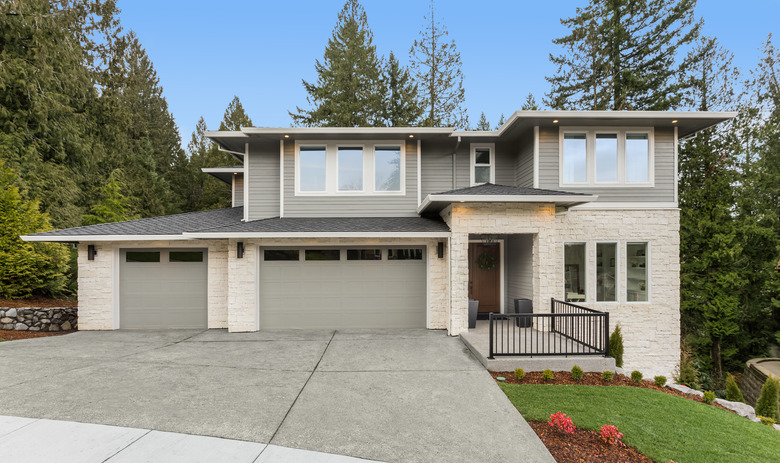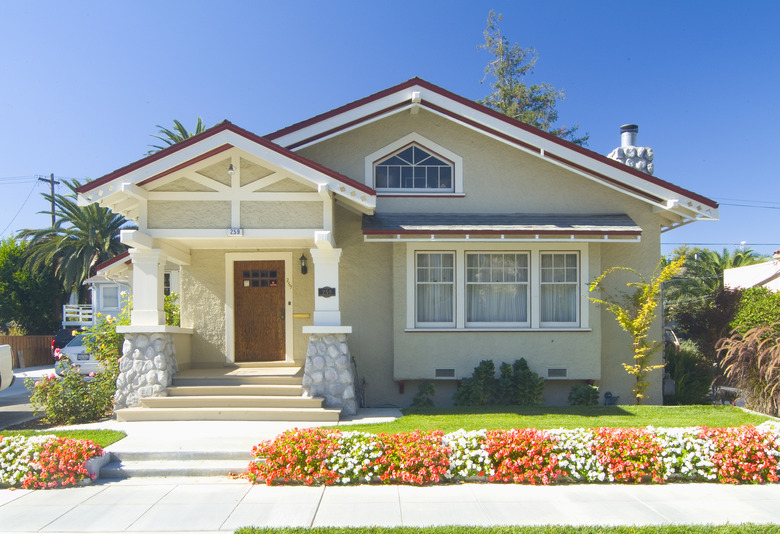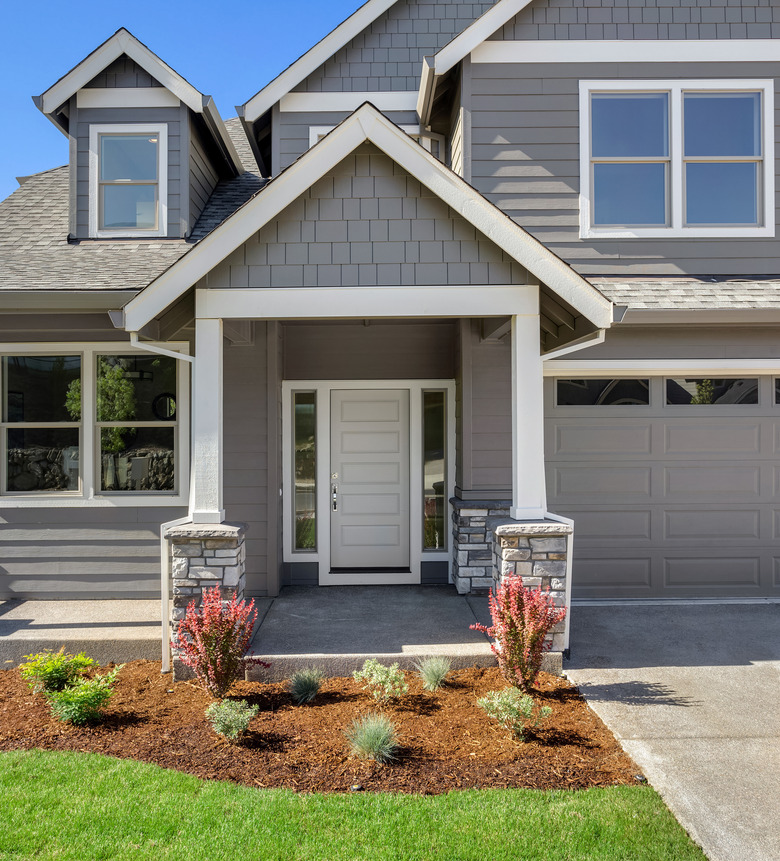When Is My First Mortgage Payment Due?
It doesn't seem fair that just when you're rejoicing because you closed the deal on your dream home, you have to hand over your first mortgage payment, but the fact is that you don't need to do so. There will be at least a one-month gap between the closing and the day that the first mortgage payment is due. In order to understand that gap and even enlarge it, you need to get an overview of mortgage payments and how they work. This won't lower the total amount you pay, but it may lower the amount you stress about it.
Tip
Usually, the first mortgage payment is due one month after the last day of the month you close.
Understanding Your Mortgage
For first-time homebuyers, everything about acquiring that new home is novel. The road to buying your first home is full of challenges, from visiting open houses to submitting applications to mortgage lenders to getting an offer accepted. At some point, as the closing date draws closer, you start thinking about monthly mortgage payments. When is that first one going to be due? Before closing? At closing? Just after closing?
The good news is that you have a bit of breathing room. You don't actually assume the mortgage loan until the real estate closing, which means you don't have to make payments before that date. In fact, you'll have a month or so after that as well to get the first payment together. Expect the first mortgage payment to be due one month after the last day of the month you close.
Monthly Mortgage Payments
It helps to walk through this rule about when the first mortgage payment is due. When you do, you will find that there is at the very least a full month grace period from closing to the day you make a first payment.
For example, if you close on September 29, the last day of the closing month is September 30, and your first mortgage payment will be due on November 1. You can build in even more lag time by closing early in the month, like on September 2. If you close on September 2, the last day of the closing month is still September 30, so you still won't owe that first payment until November 1.
This rule does delay the time you have to make the first mortgage payment, but it's not quite the freebie that it seems. You aren't actually skipping any payments at all, neither principal payments nor interest payments. That's because you have to prepay some mortgage interest in closing costs.
Mortgage Principal and Interest
A mortgage is a loan like any other. The lender makes the loan in exchange for a promise to pay interest on the loan balance. When you make a mortgage payment, some portion of each payment goes toward principal, and some goes toward interest. Principal payments reduce the outstanding loan and are paid in advance. Interest payments are the amounts the lender is charging to loan you the principal. These are paid in arrears. This is really important when it comes to understanding the grace period for the first mortgage payment.
Say you close the home loan in September and must make the first mortgage payment on November 1. It looks like you get October free, but alas, that isn't the case. In the November 1 payment, you are making a principal payment in advance for the month of November, but the interest amount you are paying is for October. That means that with your first mortgage payment, you have covered interest for the month of October, but what about the interest for September?
Interest Payment for the Month of Closing
The lender calculates interest for the month of closing on a daily basis, counting the days between the date of closing and the last day of the closing month. You must prepay this daily interest total at closing.
An example helps clarify this procedure. Let's assume a $200,000 loan for 30 years at 5 percent interest. The annual interest on your loan (5 percent times $200,000) is $10,000. Your monthly interest is $10,000 divided by 12, or $833. Divide the monthly interest by the 30 days in September to get the $27.78 daily interest on the loan. If you close your home purchase on September 29, you will need to prepay two days of interest ($55.56) as part of your closing costs. If you close on September 2, you will prepay 29 days of interest ($805.62) at closing.
You can avoid large interest prepayments at closing by scheduling closing for late in the month, but you get the most grace period before that first mortgage payment by scheduling closing at the beginning of the month.
Interest and Tax Prepayments
In addition to principal and interest payments, a monthly mortgage payment may also include other charges. The most common ones are prepayments for homeowners' insurance, property taxes and, when required, mortgage insurance. Some of these payments may be included in the closing costs, while some amount is included in the mortgage payments.
Generally, these prepayments go into an escrow account until the tax or insurance bill comes due. The lender may requires this in order to be sure that the taxes and insurance are paid. Since the real estate you are buying is the security for the loan, it is important to the lender that these obligations are kept up to date. It's important to understand each of these charges.
Property Tax Payments
Property taxes are imposed by the county in which your new home is located. The amount of the tax depends on the assessed value of your real estate. If you are not sure how much property tax you owe annually, you can look on your county assessor's website. Your lender wants these taxes to be paid on time since the county will put a lien on the property for unpaid taxes and may even sell the property.
A portion of your homeowners' insurance premium is often included in your monthly mortgage payment amount. This insurance covers damages in case your home is destroyed or someone is injured there and sues you. Since the lender is relying on the home for security for its loan, it has a direct interest in making sure that this insurance is current.
Finally, a part of your mortgage insurance may also be included in a monthly mortgage payment. Lenders often require mortgage insurance if you do not put down a down payment amount of a set percentage (sometimes 10 percent, sometimes 20 percent) of the purchase price. A low down payment means that the lender is covering almost all of the purchase price. Should the property value decrease and you default, the lender may not be able to get the full amount of the loan at a sale.
To decrease that risk, the lender can require you to purchase mortgage insurance. This protects the lender if you default. If the loan is a conventional loan, the lender will require private mortgage insurance, but with FHA and USDA loans, the insurance payment is made to the agency. In most cases, the requirement for insurance ceases when the borrower's equity increases.
Making Your Mortgage Payment
After all that comes the more basic question: How do you actually make the mortgage payment? There are several options. Usually, the choice is up to you, though sometimes, a lender requires a certain payment format. Since you are likely going to be paying for many years, it's good to understand your options and pick the one that is easiest and most reliable for you.
Your basic options include paying online, paying by phone, using autopay, mailing a check or walking it into the lender. Each has some advantages that might work well for you depending on your circumstances. Don't forget that the most important thing is to pay your mortgage on time. Your credit history depends on it.
References
- HomeLight: Hey, New Homeowner: Here's When Your First Mortgage Payment Will Be Due
- The Lenders Network: When Is Your First Mortgage Payment Due?
- Consumer Financial Protection Bureau: What Is Mortgage Insurance and How Does It Work?
- The Balance: When Is Your First Mortgage Payment Due?
- GOBankingRates: How to Make a Mortgage Payment
Paying Your Mortgage Online
With the internet, making a mortgage payment can happen in a minute or two and doesn't need to involve waiting in line or a walk to the bank. Paying is especially easy if your mortgage lender is also your banker, but it's easy enough even if not. Just log on to the lender's website with the mortgage account number as well as your bank account number and routing number.
What's the downside? If you happen to be in a place where there is no internet connection and you have waited until the last minute to pay, you may pay late. This would not be good for your credit record.
Even in this digital age, some borrowers prefer dealing with a human. If that sounds like you, call the mortgage lender's customer service line and give your payment information to a company representative. This type of payment is processed immediately, which is great if you are coming up against the deadline. What's the potential problem? You might get charged a processing fee depending on your mortgage lender.
As a general rule, lenders love autopay and will encourage borrowers to set up an automatic payment. The way it works is that you set up a schedule for automatic transfer of your mortgage payment amount from your bank account to your lender. You pick the day and the amount. This is sure to keep your account paid on time and will help avoid late fees. There is a downside. If you don't have a regular income stream and find yourself without cash one month, you'll get hit with overdraft fees.
It may be old fashioned, but it gets the job done. The old-school way of paying a mortgage was by mailing a check or money order. It's hands-on and allows those who don't feel at ease on the internet to get the monthly check to the address listed on your mortgage statement. The biggest issue for those paying by mail is the fact that the postal service can lose your letter or deliver it a week late. An extra worry is that the postage costs will add up over the years, especially if you use certified mail.
Sure, you can still walk the check to the mortgage lender or drive over there assuming you are both in the same region. Handing off the payment to a lender representative also gives you the chance to ask questions if any arise. The downside is obvious: It's time-consuming and requires personal effort.


